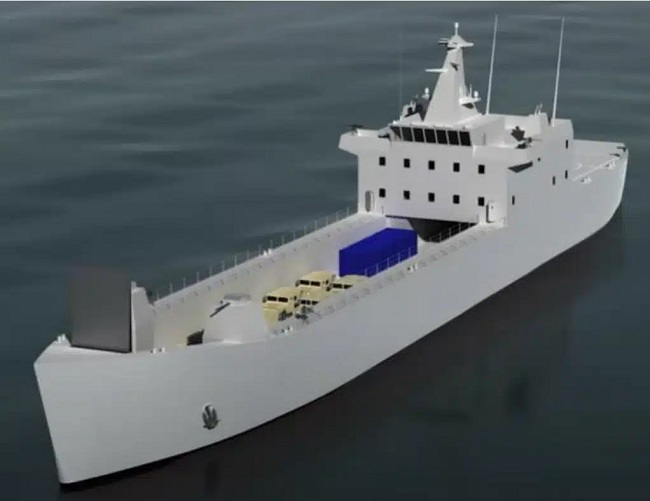
According to a new report by the Congressional Budget Office (CBO), a nonpartisan analysis for the US Congress, the Navy’s upcoming Landing Ship Medium (LSM) could cost billions more than the service plans, doubling the price per ship.
In detail, the report forecasts that the 18-ship fleet would cost between $6.2 billion and $7.8 billion which means from $340 million to $430 million per ship, in contrast with the Navy budget which plans $2.6 billion total, with about $150 million per ship. A gap of, at least, $3.6 billion.
CBO estimates are based on a ship project designed as a hybrid between an amphibious warfare ship and a ship built to commercial standards. In the case of ships built to military standards, LSM could cost even more, between $475 million and $600 million, adding between $2 billion and $3 billion to the costs of an 18-ship program, and between $5 billion and $6 billion to the costs of a 35-ship program (which is the USMC wish). Conversely, if the LSM is designed with full commercial standards, then the costs could be much less, from $110 million to $140 million per ship, reducing costs by $4 billion to $8 billion for an 18-ship program and by $5 billion to $10 billion for a 35-ship program.
The LSM is a key component of the Marine Corps’ Expeditionary Advanced Base Operations (EABO) and Littoral Warfare concepts and a capstone effort of the Corps’ Force Design 2030. Indeed, the ship's role is to transport, deploy, and resupply the maneuver elements of the Marine littoral regiments in an archipelagic battlefield in the western Pacific, in any potential competition or conflict scenario. The first ship was scheduled to be procured in 2023, but at this stage, it has been delayed until at least 2025.
The operational characteristics identified by the US Navy and the Marine Corps for the LSM are:
- Length of 200 feet to 400 feet (60-120 m);
- Draft of 12 feet (3.6 m);
- Transit speed of 14 knots with a range of 3,500 nautical miles;
- Ability to beach on a 1:40 slope (where the surface of the beach rises by 1 foot for every 40 feet - 30 cm for every 12 m - as the ship approaches the shore);
- Crew of 70 Navy sailors;
- Payload capacity of 50 marines and 587 t;
- Cargo space of at least 743 m2;
- Crane, off-load ramp, and helicopter landing pad;
- Self-defense armament of 2 30 mm guns and 6 12,7 mm guns;
- Service life of 20 years.
According to the same report, the US Navy awarded early contracts to 5 contractors for preliminary work on the design: Austal Shipbuilding, Bollinger Shipbuilding, Fincantieri Marinette Marine, VT Halter Marine, and TAI Engineers.
Follow us on Telegram.








.png)
.gif)